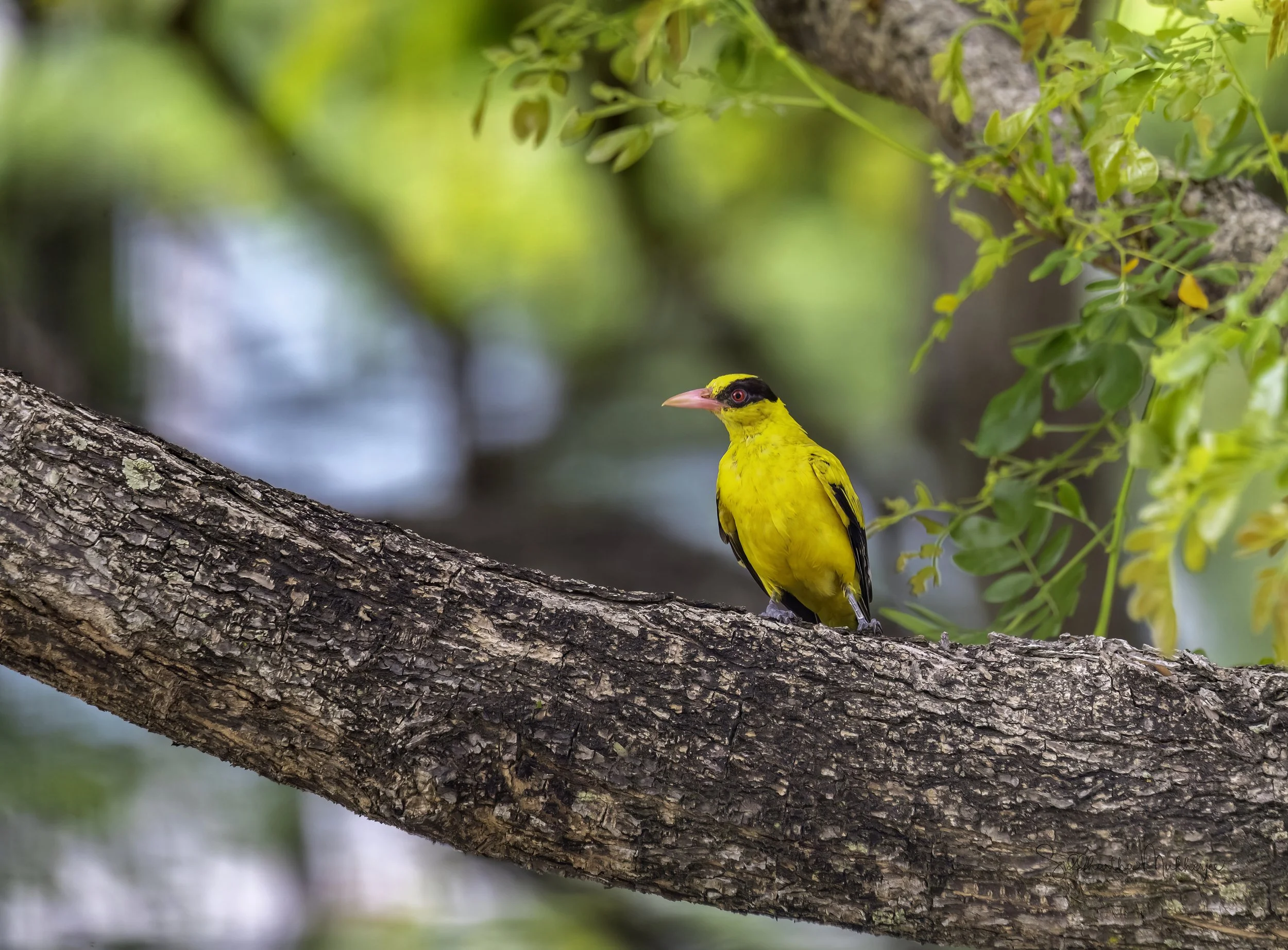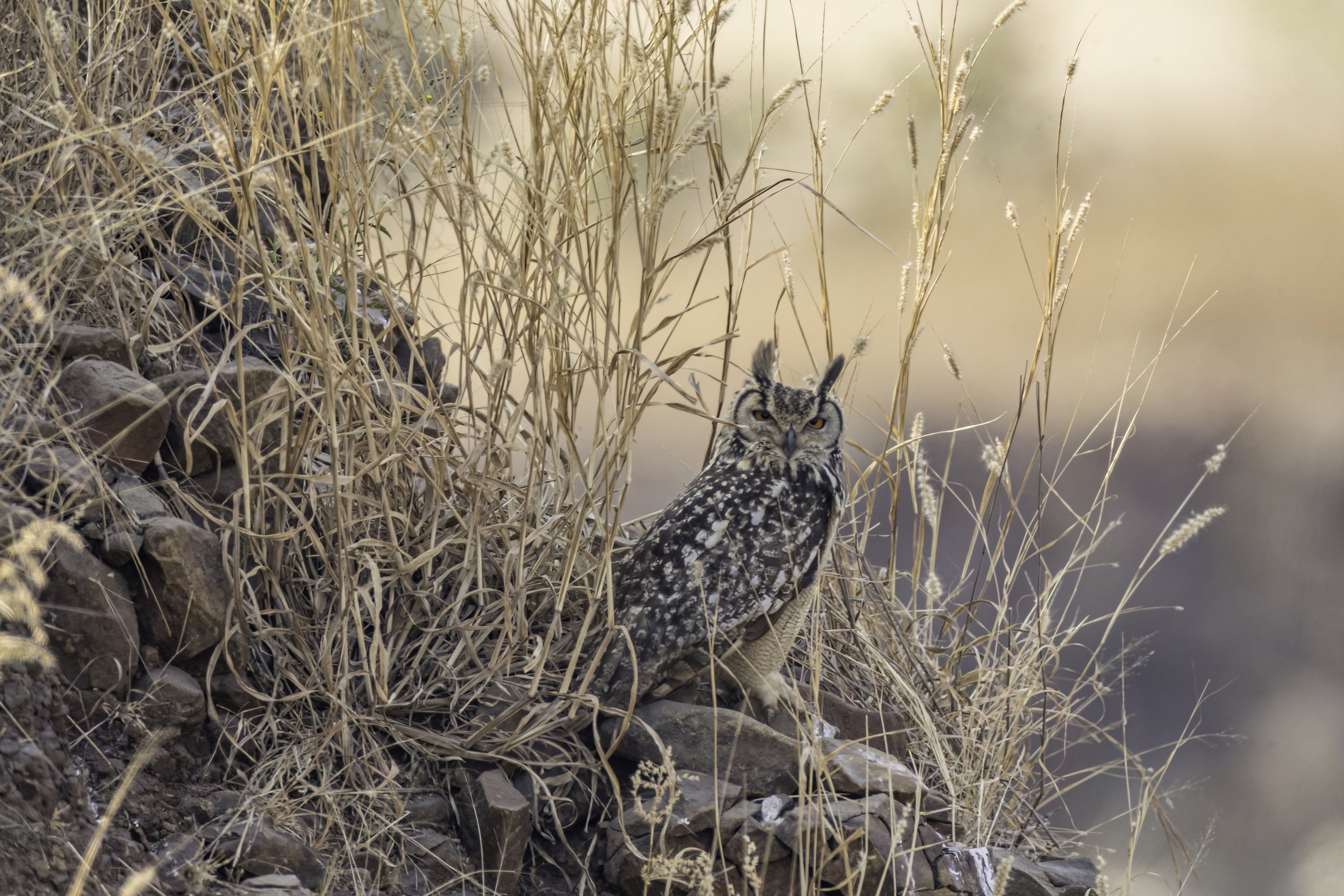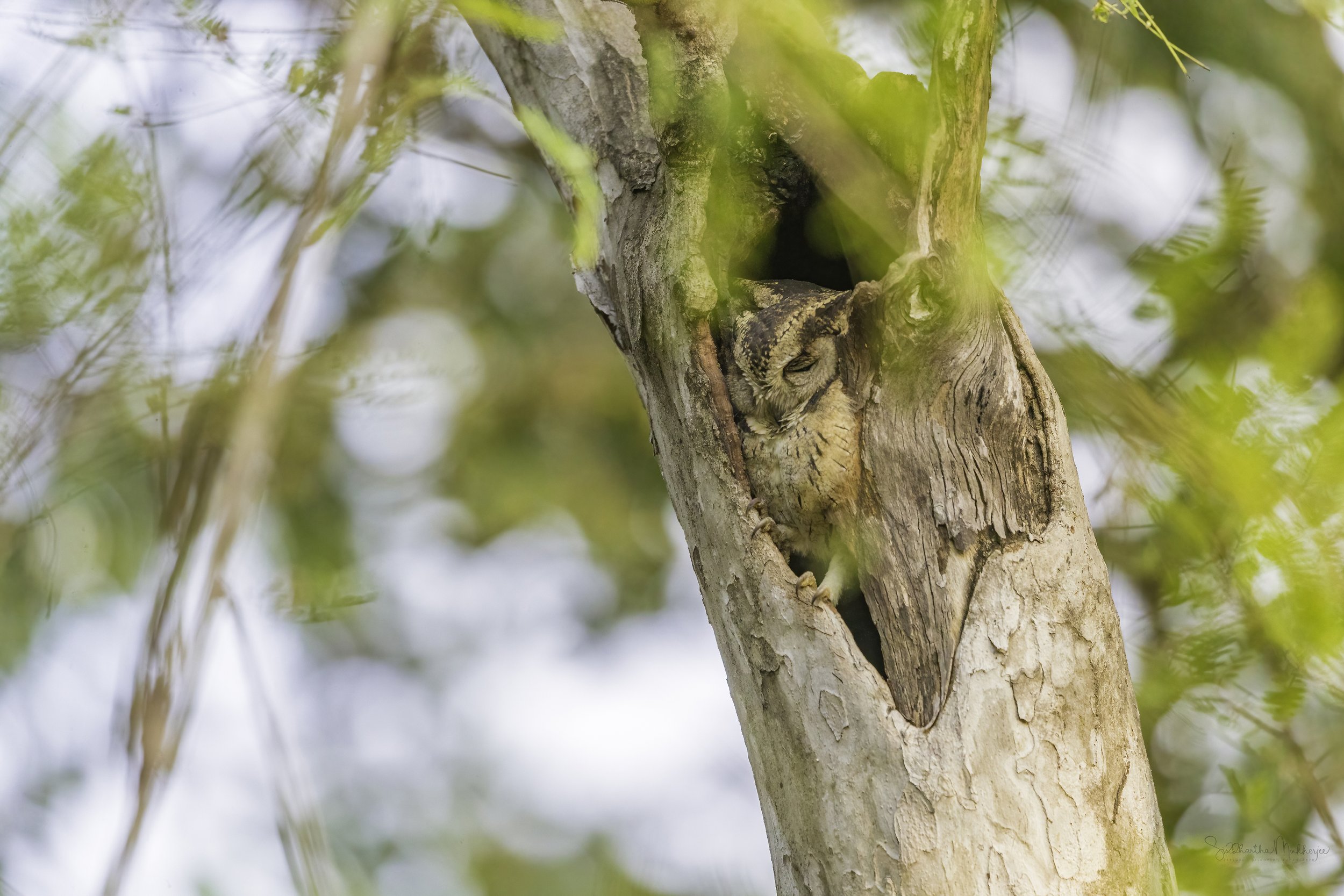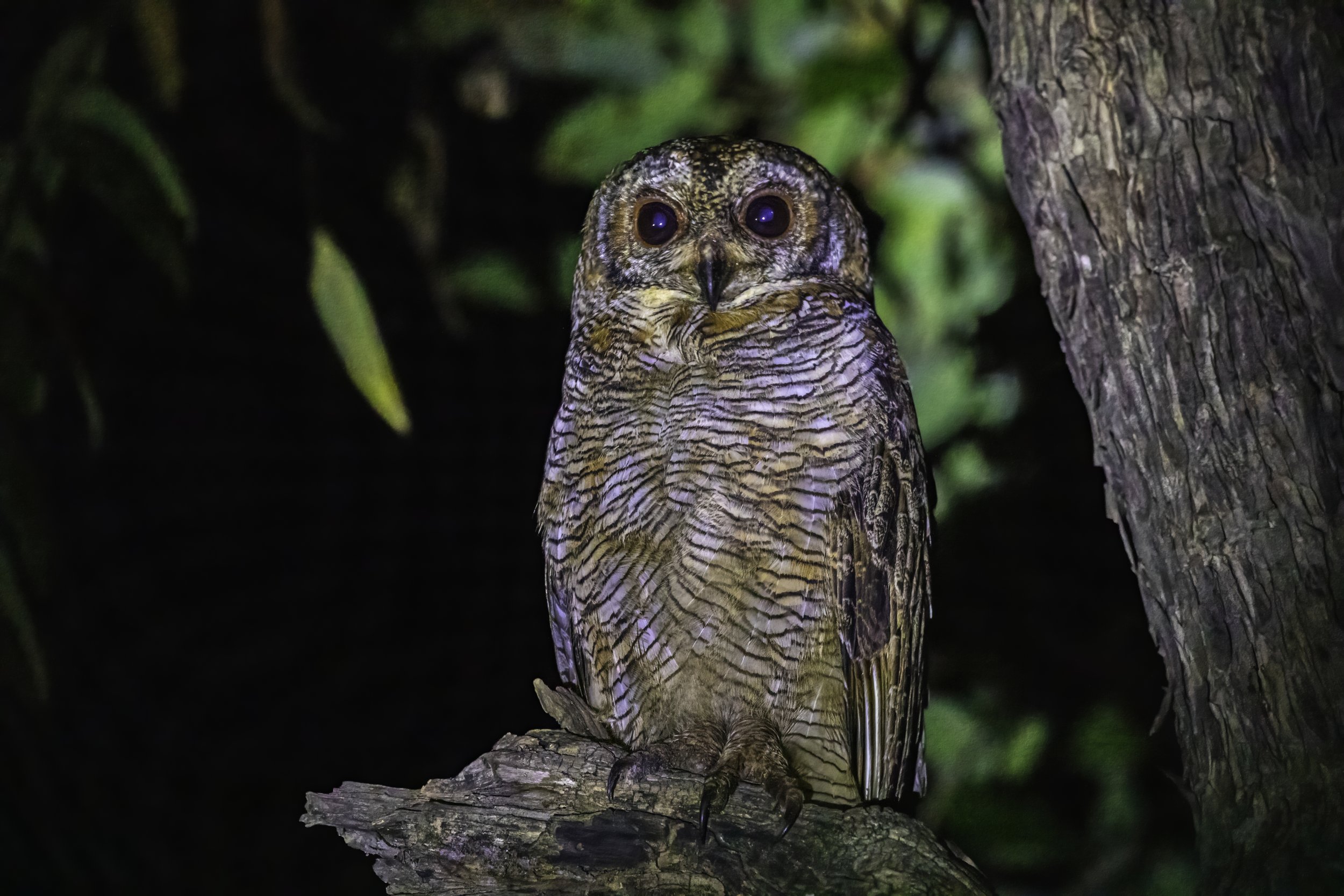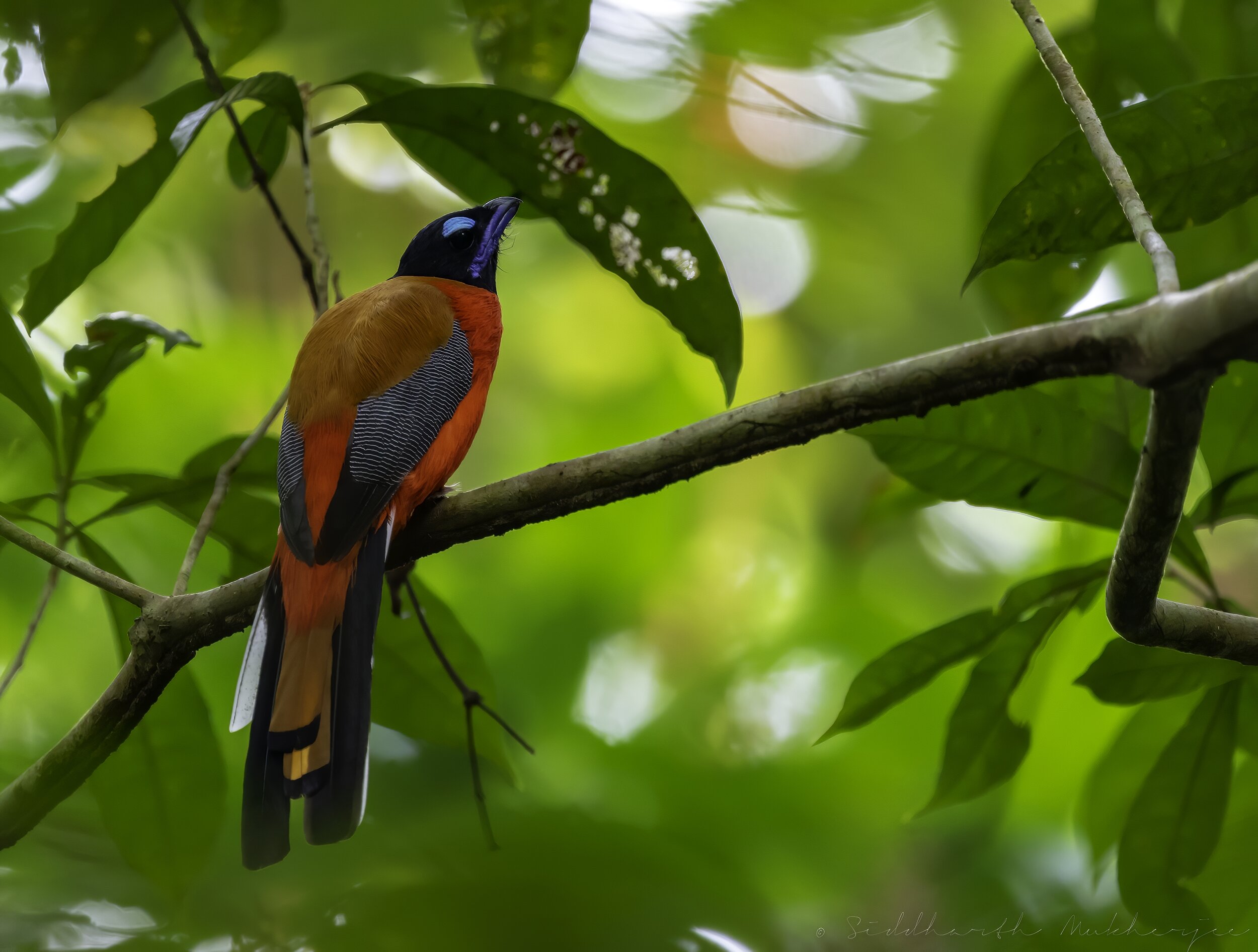A group of warm-blooded vertebrates characterised by feathers, toothless beaked jaws, the laying of hard-shelled eggs, a strong yet lightweight skeleton and immense beauty.
White-cheeked Barbet/ Small Green Barbet, Panchgani, Maharashtra (#Endemic)
Pink-necked Green Pigeon, Sungei Buloh Wetland Reserve, Singapore
Black-naped Oriole, Bedok Reservoir, Singapore
Sulphur-bellied Warbler, Ananthagiri Forest Range
Ujni backwaters, Bhigwan Bird Sanctuary
The world’s largest black-headed & the third largest species of gull in the world, the pallas’s is a predatory gull of saline, brackish, and fresh water bodies. The breeding adult has a black head with a thin incomplete crescent around the eye and a red-and-black-tipped bill. Non-breeding adults retain a partial “hood” of patchy black on the back of the head. The eye crescents and a flashing white rump help to distinguish first-winter birds from Herring-type gulls. Given its size it can be readily separated in any plumage from the smaller dark-headed gulls.
Ujni backwaters, Bhigwan Bird Sanctuary
The pale button eyes of this gull give it a somewhat fearsome appearance. The breeding adult’s head is the color of milk chocolate, lightening towards the bill. Non-breeding and first-winter birds have a dark ear patch and faint traces of the dark hood. All plumages may be confused with smaller Black-headed Gull, but note the pale eyes and more extensive black on the primaries in all plumages. Breeds on high-altitude lakes on the Tibetan Plateau and winters on marshes, estuaries, lakes and rivers, most often in coastal areas.
Sea of Okhotsk, Hokkaido
A large gull of northern coastlines; its thickset, short-winged profile distinguishes it from many similar Asian species. Adults have dark gray back and wings, intense pink legs, and an especially large white “crescent” (white tertial edges) near the wingtips when perched. Breeding adult white-headed; non-breeding birds with variably heavy brown streaking on the head and upper breast. The juveniles (featured here) are dark brown and attain the adult's paler belly and gray back gradually (adult plumage attained in fourth plumage cycle).
They’re loud, greedy, invasive, polluting and aggressive. They eat anything that moves and a lot of things that don’t. Hate them if you will, but seagulls are 100% badass.
Tricolored/ Black-headed Munia, Manjeera Reservoir
The common brown fish owl (Ketupa zeylonensis leschenaultii) occurs from the Indian subcontinent to Myanmar and Thailand. A huge bulky brown owl with a finely streaked breast, a plain face, and bright yellow eyes. Also has a dirty white “bib” and the heavy brow that gives it a moody demeanour. It inhabits waterside wooded areas from lowlands up into the mountains; and feeds by dropping down into and wading around in creeks, lakes, and pools. Often gives deep echoing hoots, as well as various shrieks and higher-pitched hoots.
Ananthagiri Hills, Vikarabad
The following series was taken - at 600mm and 1200mm - as it was being heckled by crows. Click on any photo to enable the lightbox mode.
The Black-rumped Flameback (Dinopium benghalense), also known as the lesser golden-backed woodpecker or lesser goldenback, is one of the few woodpeckers that are seen in urban areas. It has a characteristic rattling-whinnying call and an undulating flight. It is the only golden-backed woodpecker with a black throat and a black rump.
Ananthagiri Hills, Vikarabad
Watch it in action.
Read the Blog.
When the drift ice stretches out before you... and the White-tailed eagle waits for its opportunity; Drift Ice, Rausu, Sea of Okhotsk.
Bay-backed Shrike; Ameenpur Lake
A shade of twilight: Sometimes when the sun is between 0 and 6 degrees below the horizon (civil twilight) there is a momentary window when Earth's upper atmosphere scatters and reflects sunlight illuminating the lower atmosphere creating a pink glow. A light theory of color (play of words intentional). 0500 hours, sub-zero temperatures, in an icebreaker on the Sea of Okhotsk - a Large-billed Crow on the drift ice, Rausu, Hokkaido.
0500 hours, sub-zero temperatures, in an icebreaker on the Sea of Okhotsk - a pair of Large-billed Crow on the drift ice, Rausu, Hokkaido.
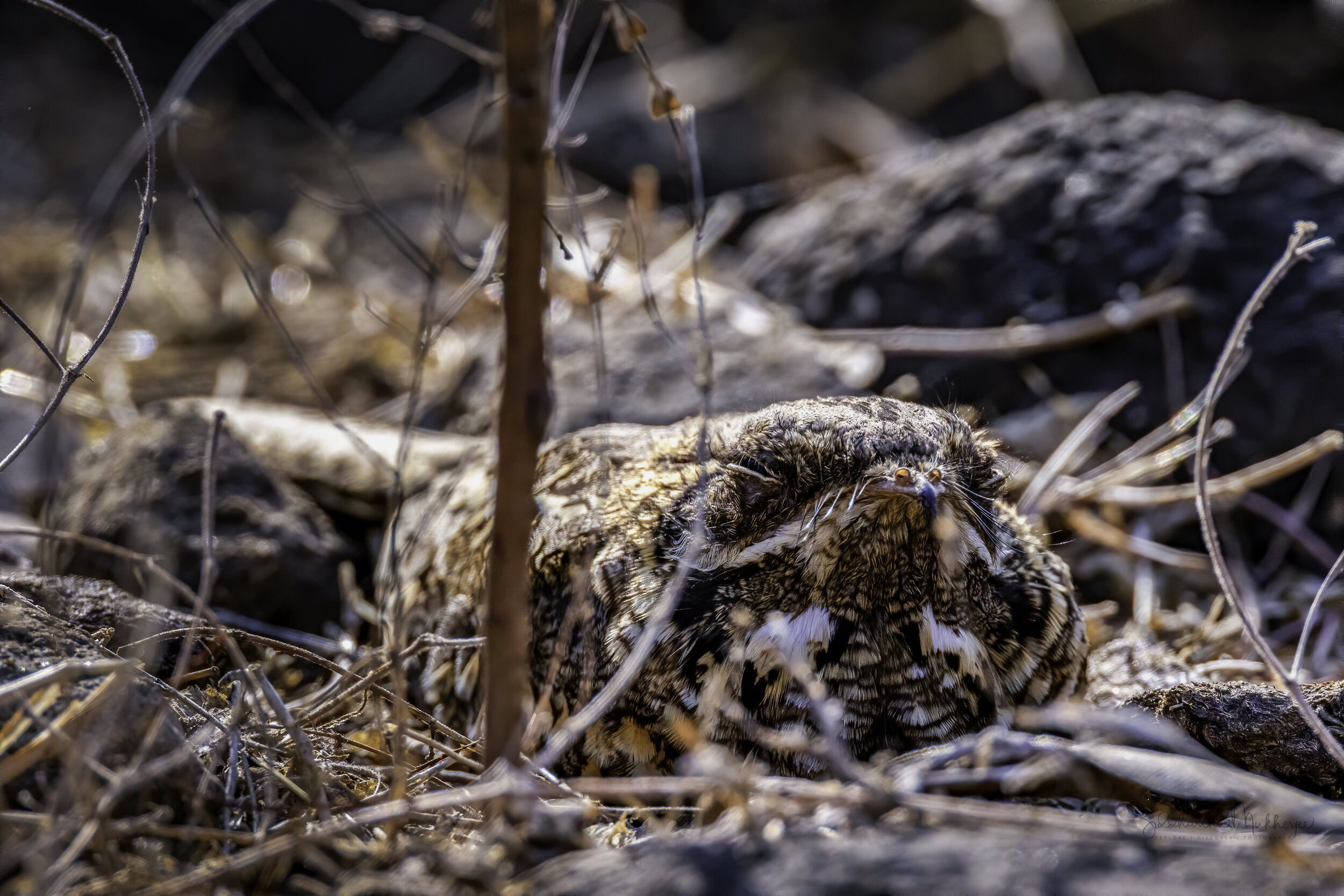
Indian Nightjar, Chincholi Wildlife Sanctuary, Karnataka
Ultramarine Flycatcher, Doi SanJu, Chiang Mai, Thailand
Mrs. Gould's Sunbird, Doi SanJu, Chiang Mai, Thailand
Tickell's Leaf Warbler, Doi SanJu, Chiang Mai, Thailand
Siberian Rubythroat, Doi Luang, Chiang Mai, Thailand
Grey Bush Chat (Male), Doi SanJu, Chiang Mai, Thailand
Olive-backed Pipit, Doi SanJu, Chiang Mai, Thailand
Little Pied Flycatcher (Female), Doi SanJu, Chiang Mai, Thailand
Japanese Tit, Doi SanJu, Chiang Mai, Thailand
Grey Bush Chat (Female), Doi SanJu, Chiang Mai, Thailand
Chestnut-vented Nuthatch, Doi SanJu, Chiang Mai, Thailand
Scarlet-rumped Trogon, Lanchang, Malaysia
Pin-tailed Whydah, Singapore
Red-headed Trogon, Bukit Fraser, Malaysia
Ferruginous Babbler, Lanchang, Malaysia
Yellow-bellied Bulbul, Sungai Congkak, Malaysia
Rufous-backed Kingfisher, Sungai Congkak, Malaysia
Stellar's Eagle, Rausu Drift Ice, Sea of Okhotsk
Greater Flameback Woodpecker, Ban Krang, Kaeng Krachan NP, Thailand
Stellar's Eagle, Rausu Drift Ice, Sea of Okhotsk
Slaty-backed Gull, Rausu Drift Ice, Sea of Okhotsk
Whooper Swan, Lake Kussharo, Hokkaido
Whooper Swans, Lake Kussharo, Hokkaido


